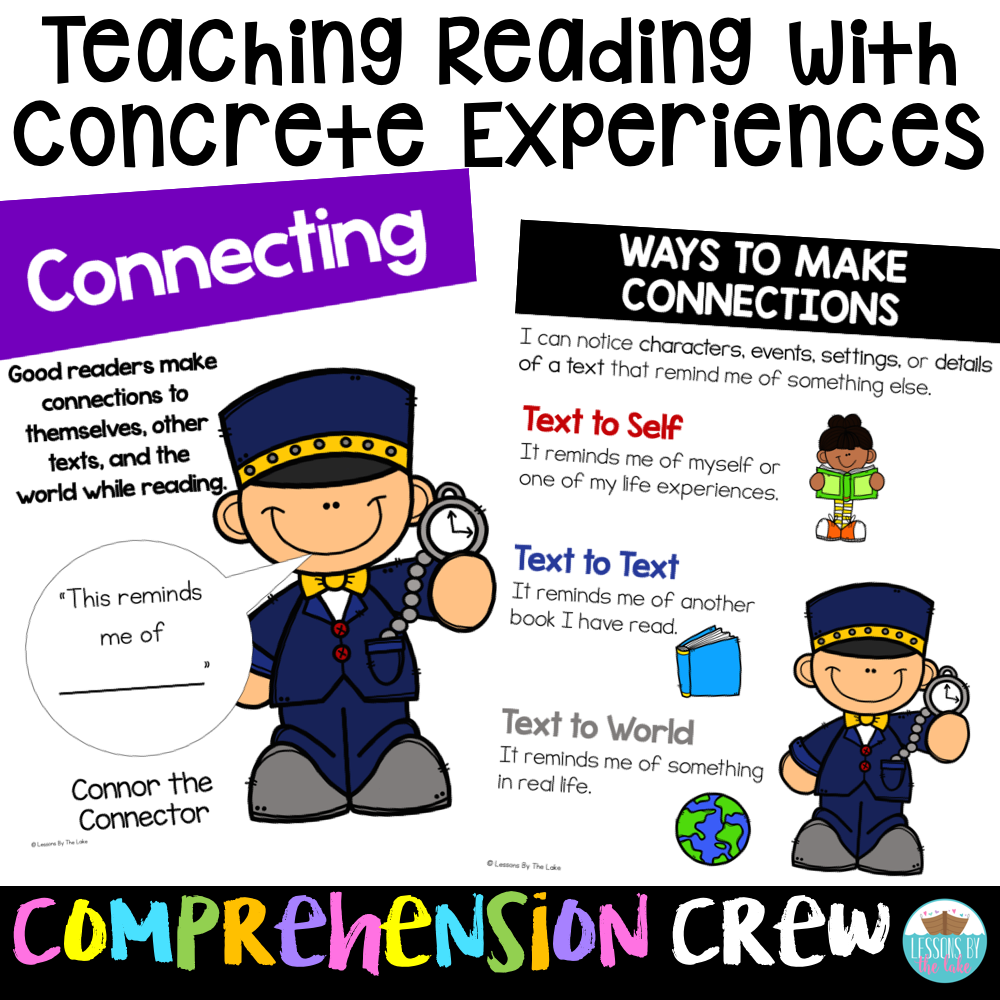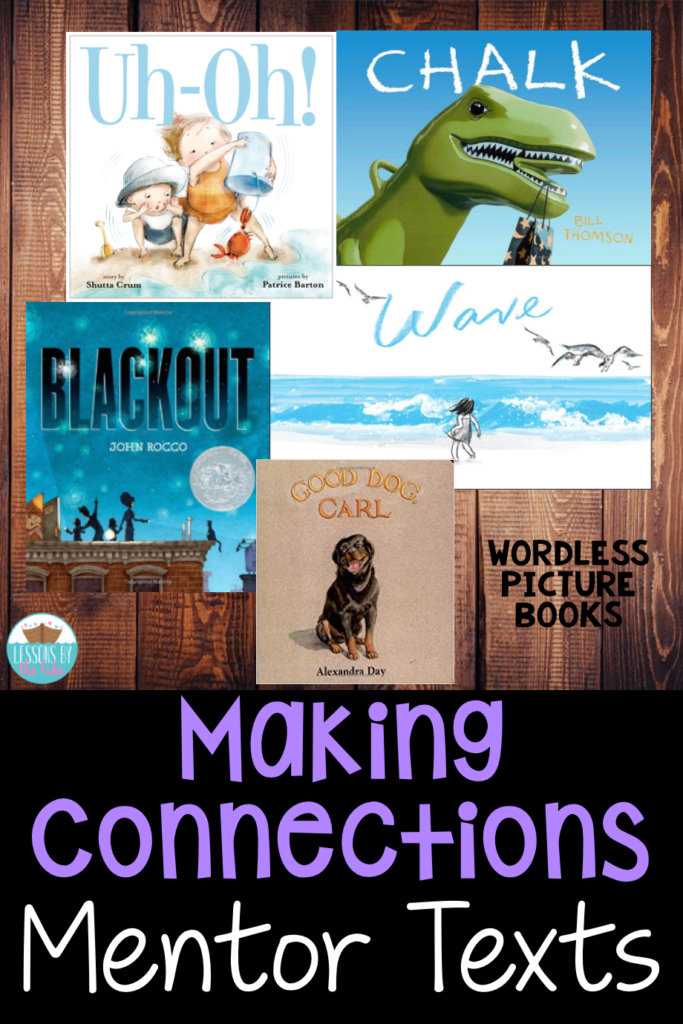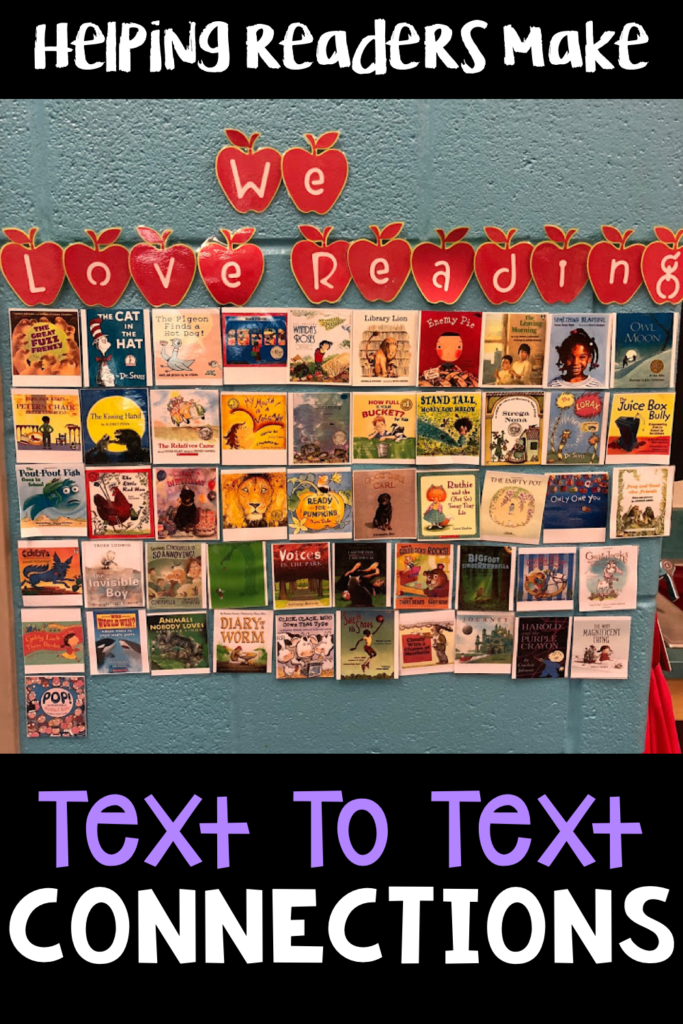Mentor Texts: Make Connections
Every teacher has had that moment that you mention something like a birthday, a pet, a flower, practically anything and all these hands go up to tell you that “my neighbor’s cousin’s friend had a birthday yesterday!” Kids can always connect whatever you are saying to something else in their lives even if it is only slightly related and especially when it has nothing to do with what you are trying to say to them. So how do we get them to hone this natural ability into an essential reading skill?
Connections is one of my favorite reading skills to teach because kids are such natural connectors and love to talk about themselves/ their experiences at any opportunity. Intentional, strategic teaching of connecting is what helps kids go from a random tangent that emerges in their thought web to intentional thoughts that help them be better readers. This change in thinking is cultivated with modeling, sentence framing, and celebrating appropriate connections. Below is some books that I have found effective in modeling making connections. Scroll down even further for the way I teach connections that I have found to be magical!
Engage Your Students In Connecting!

Connor the Connector is part of my Comprehension Crew instructional strategy. The Comprehension Crew is a group of characters each representing an essential reading skill. Each character has a profession, song, gesture, and prop that provide a concrete representation of the reading skill. These characters are used to model and reinforce each skill both in real life situations and in text. The character helps students to understand, remember, and intentionally apply skills as they are reading. This teaching format helps you provide intentional, concrete, and meaningful experiences with connection for your students. The reading character helps the skill COMES TO LIFE for the students and make it fun!
While Connor reads, he is always thinking of other books he has read, things he has experienced, and his background knowledge to see if anything connects. These connections help readers form a deeper understanding of the text.
Click on the picture above to see this resource pack. The product includes a model lesson to teach making connections with any text and an abundance of connecting activities! Connor can start helping you teach connections today!
Teaching Connecting with Mentor Texts

It is difficult to recommend books for connections because every student, in every school, in every city is so different! However, these are books that I have found have characters, plot events, and themes that all my students are able to make a connection with themself, another book, or the world. When choosing a book to teach connections, especially the first lesson make sure to choose one you know has content that will spark connections in your students. Below are the Amazon links for each of the books if you want to check them out!
- A Chair For My Mother
- I Don’t Want to Be A Frog
- Giraffes Can’t Dance
- Nonni’s Moon
- The Magician’s Hat
- Dream Big
- Ten Rules of The Birthday Wish
- Frog and Toad Collection
- Jabari Jumps
- Me… Jane
- Peter’s Chair
- Cindy Ellen (good text to text connection to Cinderella)

Wordless picture books provide such rich opportunities for discussion during shared reading. Students will see and interpret the story through their personal viewpoint lending itself well to connections. There are a few books that I have found my students can connect too well. Below are the Amazon links if you want to check them out!
My Tips for the Types of Connections
- Text To Self– by far the students favorite! Students can recognize a feeling, event, setting, picture detail, problem, thought, anything while reading to identify with the story. Once students see a part of themselves in the story or character, the book becomes easier to understand. If your students are having trouble making authentic connections to themselves you can prompt them with
- Can you connect a time you…
- felt like the character
- thought like the character
- went to the same place
- did the same activity
- had the same problem
- used the same solution
- know someone like a character
- experienced the same event
- Can you connect a time you…
- Text to Text– When this is taught engagingly, WOW can students make some amazing deep connections about characters! In order to teach this, I model and encourage connections with books we have read together. I found many students remember parts of the books we have shared when prompted but not enough of the details for connections to come naturally. To help overcome this barrier I started posting pictures of the covers of the books we read together in the classroom. Not only does this help to keep the books fresh in their minds for making connections but they feel proud seeing how many books they have read! In line for lunch they casually discuss which of the books are their favorites and recall why they like certain books. Every book is a magical journey for students, so those stories shouldn’t be read once and left behind, carry the memories of that experience with you! I read each sharing reading book over 5 days because I feel it puts more investment into the story and provides opportunities for intentional reading instruction related to the book.
- Connections can be identified in so many ways! Students noticing characters wearing similar outfits, having the same pet, same hair color… CELEBRATE THAT, IT’S CONNECTIONS!
- Characters across texts can have similarities in their challenges, character traits, events they experience, emotions, hopes, dreams, fears, interests.. the list can go on and on!
- THEMES- when students recognize connections between the messages and themes of two books, it is a beautiful thing.

- Text to World– Connections to things students know in real life is often easy for them to recognize but difficult to articulate. In order to help students understand this, ask them if the text reminds them of something from TV, the news, or just anything they know about the world. For example if you are reading a book about recycling, discuss what they know about recycling beforehand. This connection to their prior knowledge about how recycling helps the world will help them better understand the story. I often will stop at points in the book to bring up a topic I know they will have prior knowledge about and discuss that. I find that this helps get the students ready to make a connection when we get to that part of the text.
(Amazon affiliate links were used in this blog post.)
